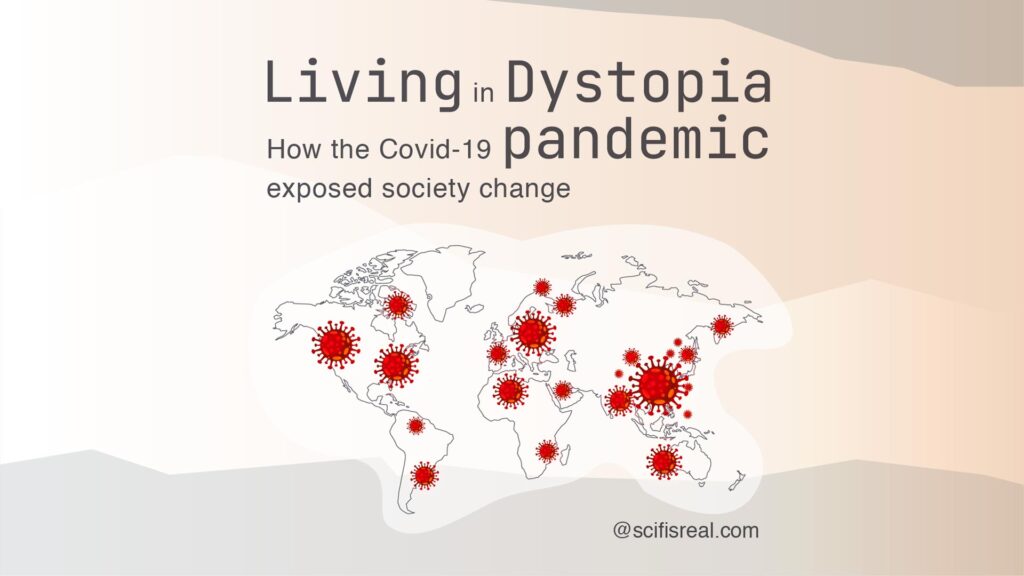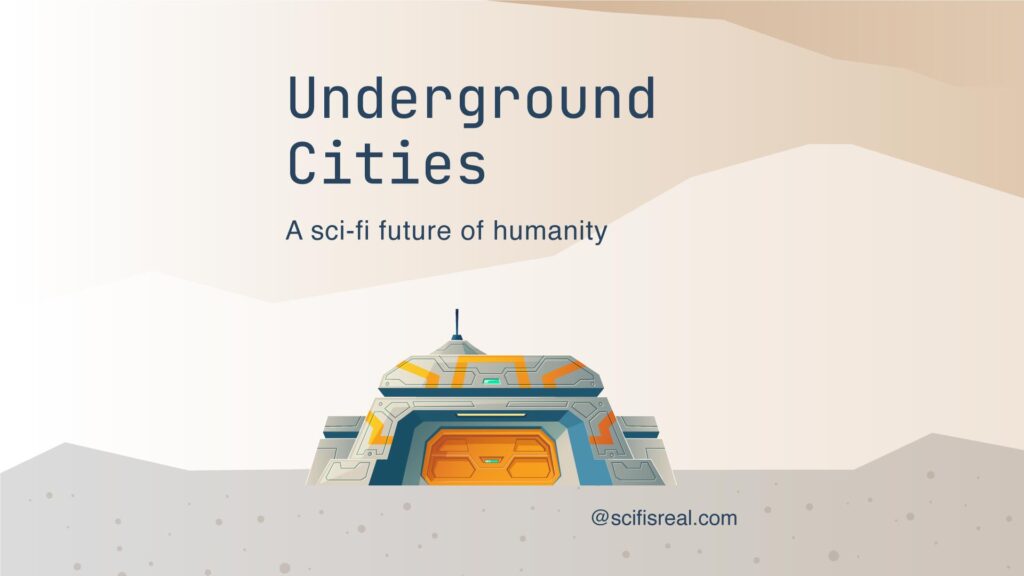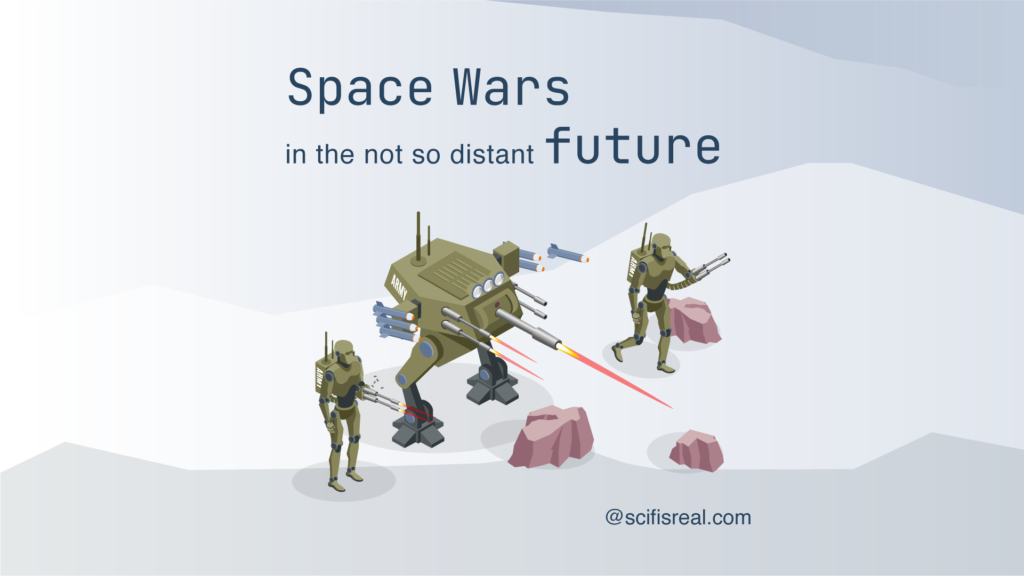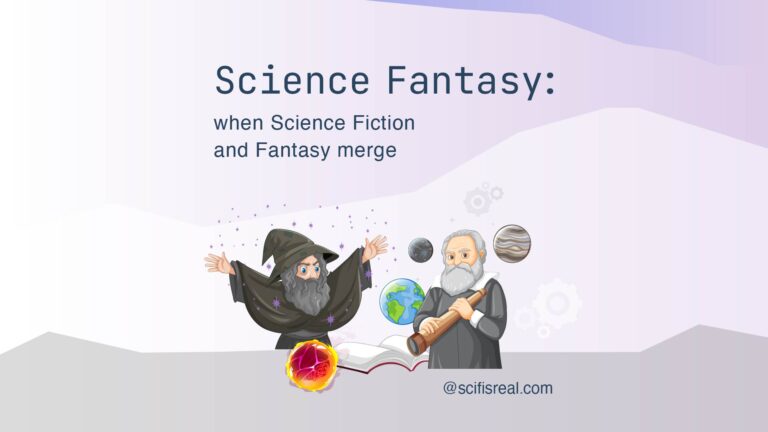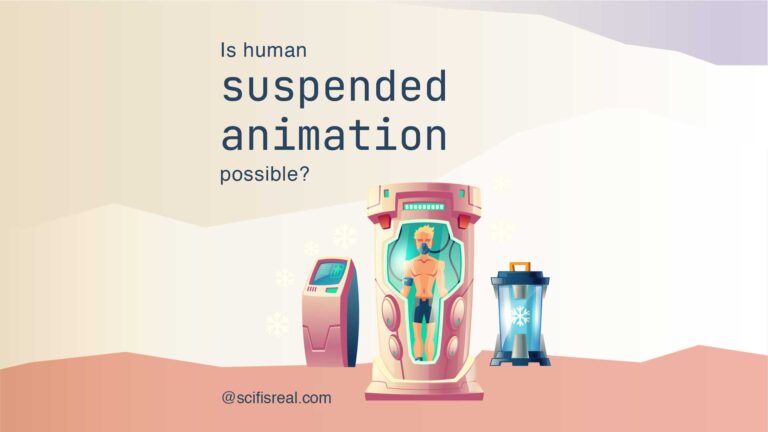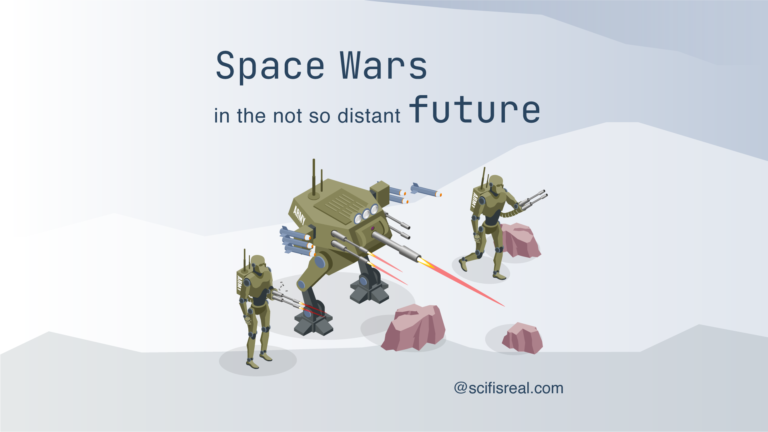How far away are we from a post apocalyptic world?
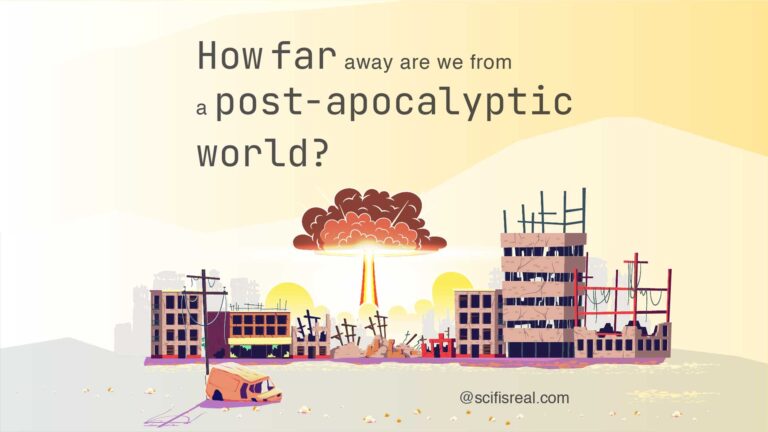
It is impossible to predict with certainty when or if a post apocalyptic world will occur. While there are many potential causes of such an event, such as nuclear war, pandemics, or climate change, it is difficult to predict when or if they will happen. It is important to take steps to mitigate these risks and prepare for potential disasters, but it is also important to remember that the future is uncertain and can be affected by a wide range of factors.
What can happen during a doomsday apocalypse?
The concept of a “doomsday apocalypse” refers to a catastrophic event that leads to the end of civilization or human extinction. The specific events that would occur in such an apocalypse can vary depending on the cause. Some potential scenarios to lead us to a post-apocalyptic world and are often depicted in science fiction include:
- Nuclear War: A widespread exchange of nuclear weapons that leads to widespread destruction and radiation.
- Pandemics: A deadly virus or bacteria that spreads rapidly and kills a large percentage of the population.
- Climate change: Extreme weather events such as droughts, floods, and storms that make it difficult for people to survive.
- Asteroid Impact: A large asteroid or comet colliding with Earth that would cause massive destruction and a “nuclear winter” effect.
- Robot Apocalypse: A scenario where AI or robots become self-aware and turn against humanity.
- Natural Disaster: A massive volcanic eruption, earthquake or other natural disaster causing widespread destruction.
- Zombie Apocalypse: A scenario where a virus or other agent causes people to become zombies, attacking and killing other humans.
- Supervolcano eruption: A volcanic eruption of magnitude 8 on the Volcanic Explosivity Index (VEI) which could cause mass extinction and change the global climate.
These are just a few examples of the many possible scenarios that could lead to a doomsday apocalypse, but it is important to note that the likelihood of these events happening is not certain and some of them are considered low probability events. However…
Are we already seeing the onset of catastrophic events that can lead us to a post apocalyptic world?
There are a number of ongoing global issues and events that have the potential to cause significant harm to human civilization and the planet, including:
- Climate change: The Earth’s climate is changing at an unprecedented rate due to the burning of fossil fuels and other human activities, which could lead to increased severe weather events, sea level rise, and other devastating impacts. The recent increase in catastrophic wildfires is a sign that the earth is changing.
- Nuclear weapons: The existence of nuclear weapons and the potential for their use in war poses an ongoing threat to human civilization.
- Pandemics: The COVID-19 pandemic has demonstrated the potential for a global health crisis to cause widespread illness and death, as well as economic and societal disruption.
- Biodiversity loss: The loss of biodiversity due to human activities such as deforestation, pollution and overfishing, could have serious consequences for the planet and human survival.
- Artificial intelligence and autonomous weapons: The rapid development of artificial intelligence and autonomous weapons has raised concerns about the potential for these technologies to be used in ways that could lead to unintended consequences, including loss of control and potential threats to human civilization.
- Cyber attacks: The increasing connectivity of our societies and reliance on technology has led to the rise of cyber attacks, which can disrupt essential services and critical infrastructure, and pose a threat to national security.
However, it’s important to note that while these issues are serious and require urgent attention, it’s difficult to predict the future and if they will lead to a doomsday apocalypse. The outcome of these issues depends on the actions taken by individuals, communities, and governments to address them.
Post apocalyptic world described in sci-fi books and movies
In sci-fi, post apocalyptic worlds are often depicted as barren, uninhabitable landscapes where resources are scarce and survival is difficult. The cause of the apocalypse can vary, but it is often portrayed as the result of a catastrophic event such as a nuclear war, pandemic, or environmental disaster. Characters in these movies must navigate a harsh, dangerous world where they must fend off threats such as mutants, zombies, or rival factions. They also often struggle with moral dilemmas and the question of what it means to be human in such a world. The post-apocalyptic genre in science fiction often explores themes such as the fragility of civilization, the potential for human resilience, and the consequences of our actions.
Best science fiction books showing a post apocalyptic world:
- “War of the Worlds” by H.G. Wells: This classic novel, first published in 1898, tells the story of an alien invasion that leads to the near-extinction of humanity.
- “The Road” by Cormac McCarthy: Set in a post-apocalyptic America, the novel follows the journey of a father and his young son as they struggle to survive in a world without civilization.
- “The Stand” by Stephen King: This post-apocalyptic novel tells the story of a group of survivors after a devastating plague wipes out most of humanity.
- “The Children of Men” by P.D. James: In a world where humanity has become infertile and the last generation is dying out, a small group of people struggle to survive and preserve the remnants of civilization.
- “The Hunger Games” by Suzanne Collins: Set in a post apocalyptic North America, the novel follows the story of a young girl who is forced to compete in a brutal, televised fight to the death.
- “The Handmaid’s Tale” by Margaret Atwood: This novel is set in a dystopian future where a totalitarian regime has taken over the United States and subjugated women, turning them into reproductive slaves.
- “The Road to Nowhere” trilogy by Meg Elison: The novel is set in a post-apocalyptic America where a devastating global pandemic has killed off most of the population, and the survivors are fighting to survive in a world overrun by zombies.
How is the post apocalyptic world seen in sci-fi movies?
- Mad Max (1979): In a future where society has collapsed and gasoline is scarce, a vengeful police officer (Mel Gibson) patrols the highways, fighting to survive against gangs of marauders.
- The Road Warrior (1981): In the post apocalyptic Australian wasteland, a cynical drifter (Mel Gibson) agrees to help a small, gasoline-rich community escape a band of bandits.
- The Terminator (1984): In the post apocalyptic future, a cyborg assassin (Arnold Schwarzenegger) is sent back in time to eliminate the mother of the future leader of the rebellion against the machines.
- The Day After (1983): This television movie depicts a fictional war between NATO forces and the Warsaw Pact that rapidly escalates into a full-scale nuclear exchange between the United States and the Soviet Union, and the immediate, long-term effects of the attack on the United States.
- The Book of Eli (2010): In a post apocalyptic America, a lone survivor (Denzel Washington) fights his way across the wasteland of the American West, protecting a sacred book that holds the secrets of the future.
- I Am Legend (2007): Will Smith plays the role of the last man on earth, scientist Robert Neville. He is seemingly the only survivor of a man-made plague that transforms humans into bloodthirsty mutants.
- 28 Days Later (2002): After a powerful virus is unleashed, most of the population is wiped out and the survivors must band together to survive in a world overrun by zombies.
- The Road (2009): A father and his young son walk alone through burned America, heading for the coast. Nothing moves in the ravaged landscape save the ash on the wind and water. It is cold enough to crack stones, and, when the snow falls it is gray. The sky is dark.
- Waterworld (1995): “Waterworld” is a 1995 post-apocalyptic science fiction film set in a future where the sea level has risen submerging most of the land. The story follows a mutated loner, known as the Mariner, who is the only one capable of navigating the treacherous new world on his unique trimaran. He joins a small community of survivors, who are also searching for the last piece of land on Earth, called Dryland.
How can we prepare for a post apocalyptic world?
There is no way to fully prepare for a doomsday post apocalyptic world, as the specific events that could lead to such an event are impossible to predict. However, there are steps that individuals and communities can take to be better prepared for a wide range of potential disasters. These include:
- Building an emergency supply kit: This should include food, water, first aid supplies, and other essentials that you would need in case of an emergency.
- Developing a plan: Have a plan with your family or friends on how to communicate and find each other in case of an emergency, and a place to meet.
- Staying informed: Stay informed about potential risks and hazards, and know what to do in case of an emergency.
- Building community resilience: Building stronger and more connected communities can help us to better withstand and recover from disasters.
- Learning skills: Learn basic survival skills such as first aid, self-defense, and how to grow food or purify water.
- Stockpiling: Stockpiling items that are essential for survival, such as food, water, medicine, and tools.
- Building a shelter: Building a shelter that can withstand extreme weather and other hazards.
- Investing in renewable energy: Investing in renewable energy sources such as solar and wind power can help to reduce dependence on fossil fuels and decrease the risk of fuel shortages.
It is important to note that preparing for a post apocalyptic world is not only about having physical items or supplies, but also about having the right mindset, being resilient and adaptable, and being able to think critically and make good decisions in difficult situations.
Are there preparations being made by humans for the survival of civilization as we know it?
There are a number of efforts being made by governments, organizations, and individuals to prepare for potential disasters and risks to civilization as we know it. These include:
- Emergency management: Many governments have emergency management agencies that are responsible for planning and responding to disasters.
- Nuclear preparedness: Some countries have civil defense plans in place to protect citizens in case of a nuclear war.
- Climate change adaptation: Many governments and organizations are working to adapt to the impacts of climate change, such as sea level rise, droughts, and extreme weather events.
- Space exploration: Some countries and private companies are investing in space exploration and developing plans for colonizing other planets as a “plan B” for the survival of human civilization.
- Long-term archival: There are efforts to preserve human knowledge and culture for future generations, such as the Long Now Foundation’s 10,000-year clock and the Svalbard Global Seed Vault.
- Pandemic preparedness: Governments and organizations are working to prepare for and respond to pandemics and other global health crises, such as the COVID-19 pandemic
- Biodiversity conservation: Efforts to conserve biodiversity and protect endangered species can help to ensure that the natural systems that support human life are not irreparably damaged.
- Scientific research: Scientists and researchers are investigating different fields to have a better understanding of the risks and hazards that could threaten the survival of human civilization, and to develop new technologies and strategies to mitigate these risks.
However, it is worth noting that while these efforts can help to reduce the risk of a catastrophic event, they cannot guarantee that such an event will not occur. Additionally, many of these efforts are still in their early stages, and it is not certain how effective they will be in the long-term.

